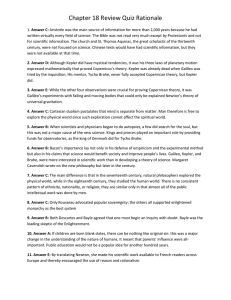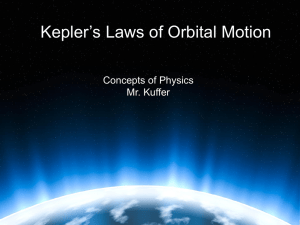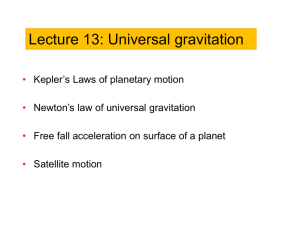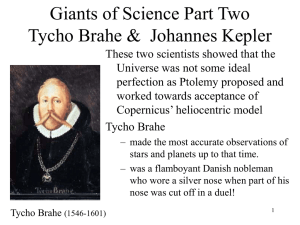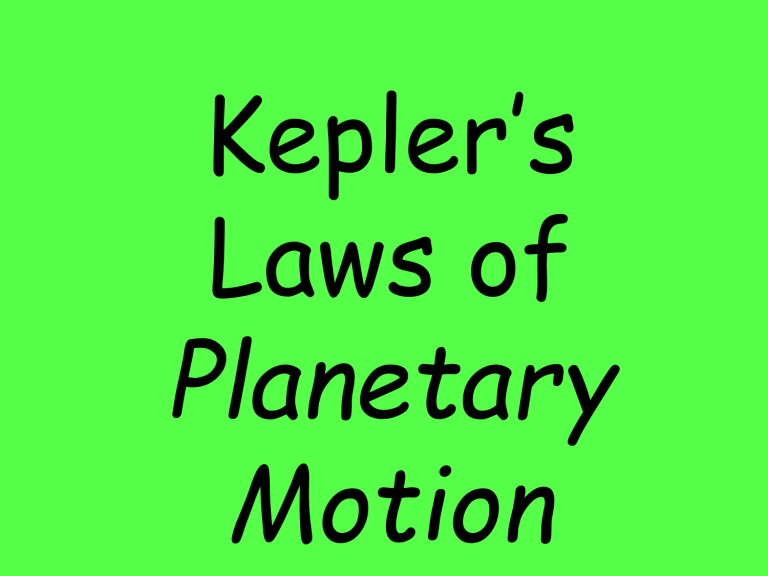
Kepler’s Laws of Planetary Motion Tycho Brahe’s Observations Brahe’s observations measured the positions of stars and planets with phenomenal accuracy. His data supported the heliocentric (sun centered) model Tycho Brahe (1546 – 1601) How Tycho Observed the Sky Parallax : apparent difference in position of object viewed from two different locations Johannes Kepler Johannes Kepler (1571 – 1630) Using data collected by Tycho Brahe, Kepler derived three laws of planetary motion. These laws describe: 1. The shape of planetary orbits 2. The speed of orbital motion 3. The relation between orbital size and orbital period ELLIPSE - an oval built around two points, called foci If you make a line from one focus, to any point on ellipse, to the other focus, it will always be the same length! Ellipse animation Kepler’s 1st Law: “Planets orbit the Sun in ellipses, with the Sun at one focus.” The eccentricity of the ellipse, “e”, tells you how elongated it is. When e=0 the shape is a circle, e<1 for all other ellipses. nd 2 Kepler’s Law of Planetary Motion: Planets move fastest when closest to the Sun. A.K.A. “Equal areas in equal times….” sun A.K.A. “The Pizza Pie Law” If it sweeps out equal areas in equal times, does it travel faster or slower when it is far from the Sun? If it sweeps out equal areas in equal times, does it travel faster or slower when far from the Sun? If is sweeps out equal areas in equal times, does it travel faster or slower when far from the Sun? Same Areas • Perihelion: point in orbit closest to the Sun • Planet moves at its fastest velocity • Aphelion: point in orbit farthest from the Sun • Planet moves at its slowest velocity IN PLAIN ENGLISH: A planet moves faster in its orbit when it is closer to the Sun i.e. faster at perihelion & slower at aphelion A line joining a planet and the Sun sweeps out equal areas in equal intervals of time. •Perihelion: closest to Sun, fastest motion •Aphelion: farthest from Sun, slowest rd 3 Kepler’s Law of Planetary Motion: A planet’s orbital period is proportional to its average distance from the Sun. distance period

